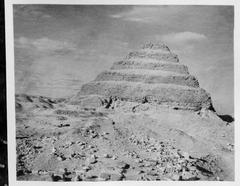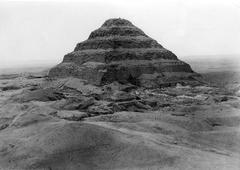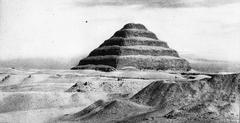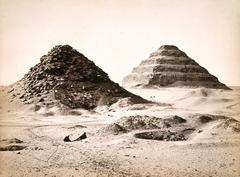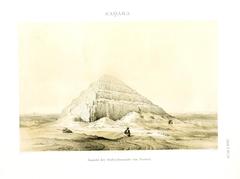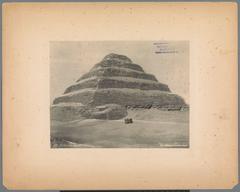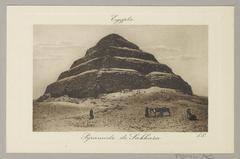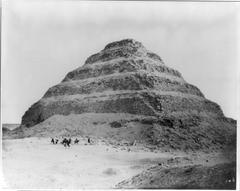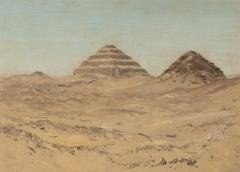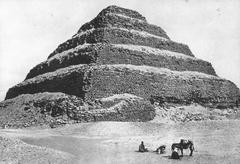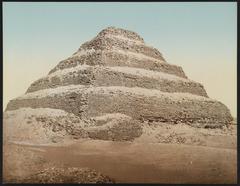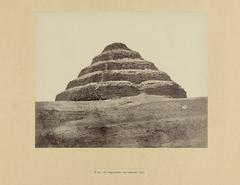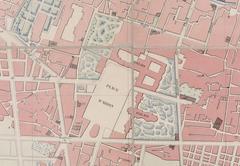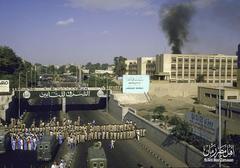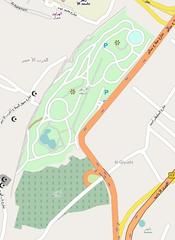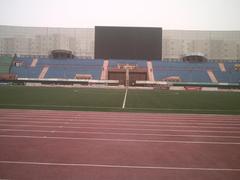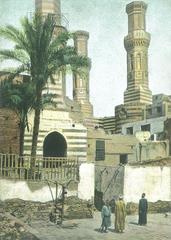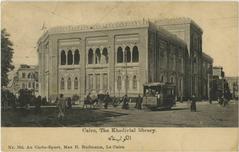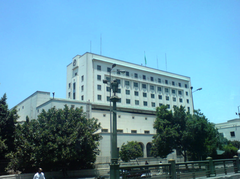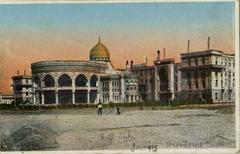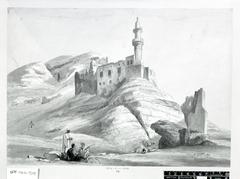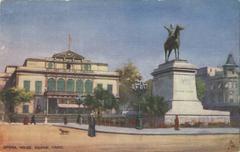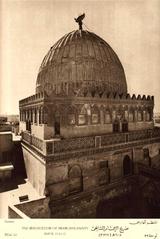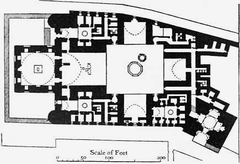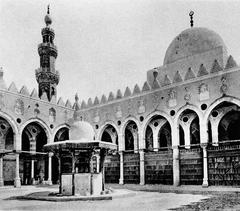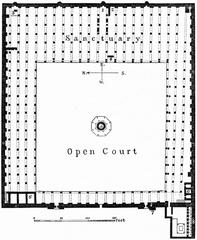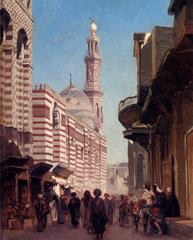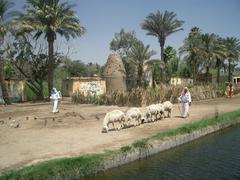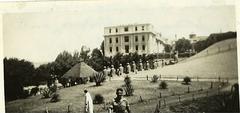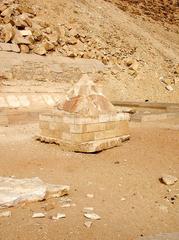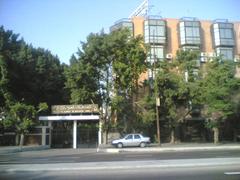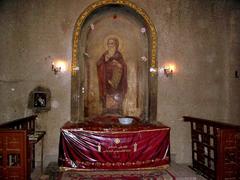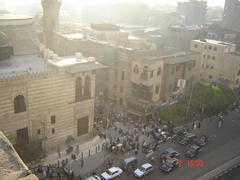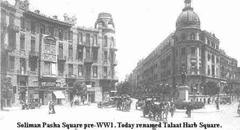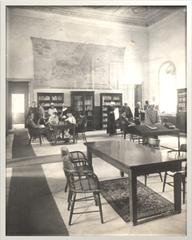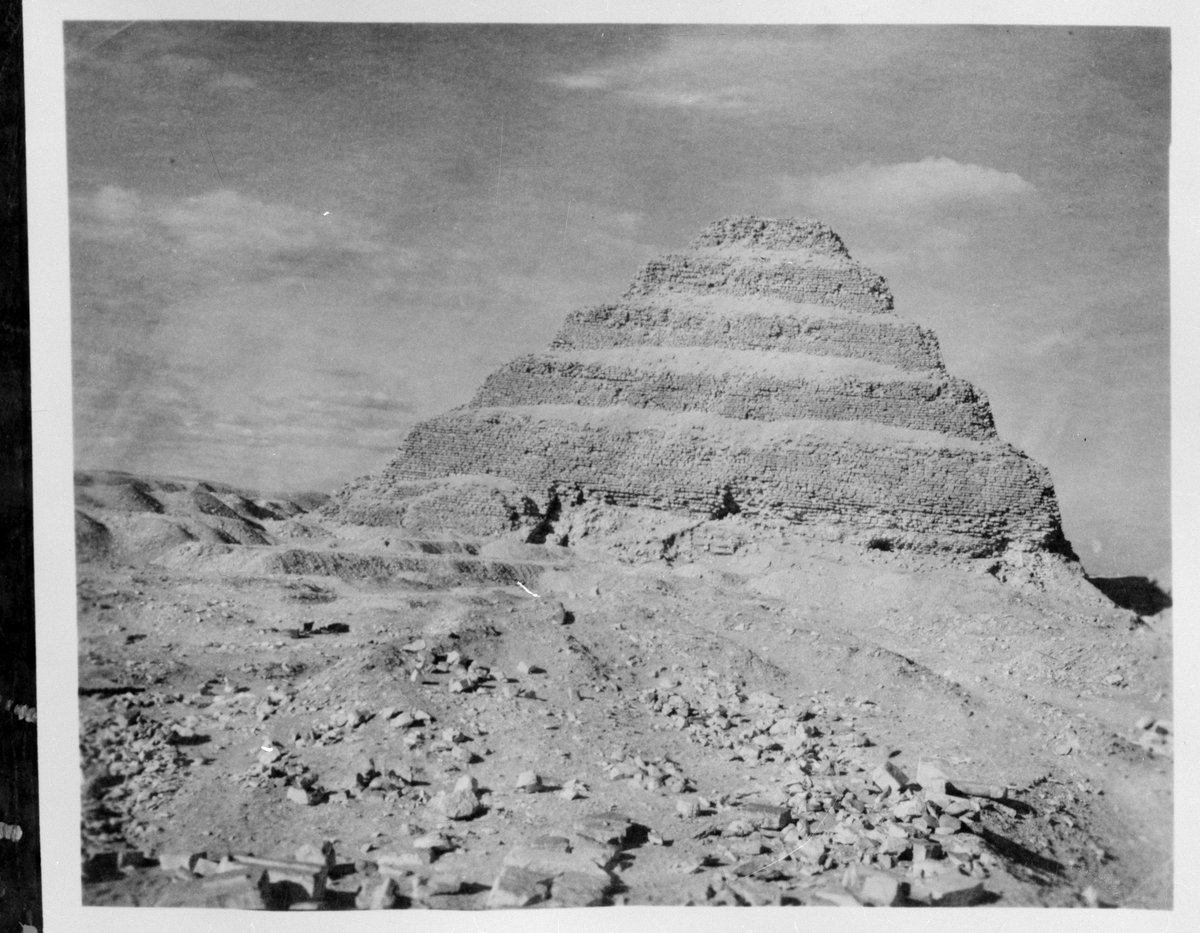
Comprehensive Guide to the Pyramid of Djoser: Visiting Hours, Tickets, and Historical Significance
Date: 18/07/2024
Introduction
The Pyramid of Djoser, also known as the Step Pyramid, is a monumental testament to the ingenuity and architectural prowess of ancient Egypt. Located at the Saqqara necropolis, this iconic structure represents a significant leap in the evolution of pyramid construction, marking the transition from traditional mastaba tombs to the grandeur of pyramid forms that would define the Old Kingdom. Built during the reign of Pharaoh Djoser (c. 2670-2640 BCE), the pyramid stands as a symbol of his eternal reign and a microcosm of the universe as understood by the ancient Egyptians (Klemm, 2010) (Arnold, 2003) (Shaw, 2012) (Wilkinson, 2003).
Designed by the visionary architect Imhotep, the Pyramid of Djoser is considered the world’s earliest monumental structure built entirely of dressed stone. This pioneering design involved stacking progressively smaller mastabas atop one another, creating the distinctive stepped form that reaches a height of about 60 meters (200 feet) (Lehner, 1997). Imhotep’s contributions to Egyptian civilization were so profound that he was later deified as the god of wisdom, medicine, and architecture (Shaw, 2012).
The pyramid complex, enclosed within a massive rectangular wall, includes a myriad of temples, courtyards, and shrines, all meticulously designed to serve the pharaoh’s needs in the afterlife and ensure his continued rule from beyond the grave. The Pyramid of Djoser has undergone extensive archaeological studies, revealing a labyrinthine network of tunnels and chambers beneath the structure, including the burial chamber of Djoser himself (Arnold, 2003). Despite the looting of the pharaoh’s mummy in antiquity, the pyramid still holds a wealth of treasures that provide invaluable insights into the life and beliefs of ancient Egypt.
Today, the Pyramid of Djoser remains a popular destination for tourists worldwide, offering a glimpse into the grandeur of ancient Egyptian architecture and the enduring legacy of one of its most innovative periods (Klemm, 2010).
Table of Contents
- [History and Significance of the Pyramid of Djoser](#history-and-significance-of-the-pyramid-of-djoserhistory-and-significance-of-the-pyramid-of-djoser)
- [The Dawn of Pyramid Construction](#the-dawn-of-pyramid-constructionthe-dawn-of-pyramid-construction)
- [Symbolism and Religious Significance](#symbolism-and-religious-significancesymbolism-and-religious-significance)
- [Imhotep - The Visionary Architect](#imhotep---the-visionary-architectimhotep---the-visionary-architect)
- [Unraveling the Mysteries of the Pyramid](#unraveling-the-mysteries-of-the-pyramidunraveling-the-mysteries-of-the-pyramid)
- [A Legacy of Architectural Innovation](#a-legacy-of-architectural-innovationa-legacy-of-architectural-innovation)
- [Visitor Information](#visitor-informationvisitor-information)
- [Ticket Prices](#ticket-pricesticket-prices)
- [Opening Hours](#opening-hoursopening-hours)
- [Travel Tips](#travel-tipstravel-tips)
- [Accessibility](#accessibilityaccessibility)
- [Special Events](#special-eventsspecial-events)
- [FAQ](#faqfaq)
- [Exploring the Architectural Marvels of the Pyramid of Djoser](#exploring-the-architectural-marvels-of-the-pyramid-of-djoserexploring-the-architectural-marvels-of-the-pyramid-of-djoser)
- [The Step Pyramid Design](#the-step-pyramid-designthe-step-pyramid-design)
- [Key Features of the Complex](#key-features-of-the-complexkey-features-of-the-complex)
- [Architectural Significance](#architectural-significancearchitectural-significance)
- [Conclusion](#conclusionconclusion)
History and Significance of the Pyramid of Djoser
The Dawn of Pyramid Construction
The Pyramid of Djoser, located at the Saqqara necropolis, stands as a testament to the ingenuity of ancient Egyptian architecture and the ambition of Pharaoh Djoser, the second king of the Third Dynasty of Egypt (c. 2670-2640 BCE). This remarkable structure, also known as the Step Pyramid, marks a pivotal moment in Egyptian history – the transition from mastaba tombs to the iconic pyramid form that would define the Old Kingdom.
Before Djoser, Egyptian royalty were buried in mastabas, rectangular structures with flat roofs and sloping sides. Djoser’s chief architect, Imhotep, revolutionized funerary architecture by conceiving a stepped pyramid, essentially stacking progressively smaller mastabas atop one another. This innovative design, a radical departure from tradition, is considered the world’s earliest known monumental structure built entirely of dressed stone.
Symbolism and Religious Significance
The Pyramid of Djoser was not merely a tomb; it was a powerful symbol of Djoser’s eternal reign and a microcosm of the universe as understood by the ancient Egyptians. The six steps, rising to a height of about 60 meters (200 feet), are believed to represent the pharaoh’s ascent to the heavens and his journey to join the sun god Ra in the afterlife.
The pyramid complex, enclosed within a massive rectangular wall, also includes a number of temples, courtyards, and shrines, each with its own symbolic meaning. The entire complex, covering an area of 15 hectares (37 acres), was designed to serve the pharaoh’s needs in the afterlife and ensure his continued rule from beyond the grave.
Imhotep - The Visionary Architect
The genius behind the Pyramid of Djoser was Imhotep, a polymath whose brilliance extended beyond architecture to encompass medicine, engineering, and writing. He is credited with introducing the use of columns and other architectural elements that would become hallmarks of Egyptian architecture.
Imhotep’s contributions to Egyptian civilization were so profound that he was later deified as the god of wisdom, medicine, and architecture. His legacy lived on for centuries, and his name was invoked by architects and scribes long after his death.
Unraveling the Mysteries of the Pyramid
The Pyramid of Djoser has been the subject of extensive archaeological study, revealing fascinating insights into the construction techniques and religious beliefs of the ancient Egyptians. Excavations have unearthed a labyrinthine network of tunnels and chambers beneath the pyramid, including the burial chamber of Djoser himself.
While the pharaoh’s mummy was looted in antiquity, the pyramid still holds a wealth of treasures, including intricate reliefs, statues, and inscriptions that provide valuable clues about life and death in ancient Egypt.
A Legacy of Architectural Innovation
The Pyramid of Djoser stands as a testament to the ambition, ingenuity, and architectural prowess of the ancient Egyptians. It marked a turning point in funerary architecture, paving the way for the construction of the iconic pyramids of Giza and inspiring generations of builders and architects.
Today, the Pyramid of Djoser remains a popular destination for tourists from around the world, who come to marvel at its grandeur and delve into the mysteries of Egypt’s ancient past. Its enduring legacy serves as a reminder of the enduring power of human creativity and the timeless allure of ancient civilizations.
Visitor Information
Ticket Prices
The ticket prices for visiting the Pyramid of Djoser are as follows:
- Adults: 200 EGP
- Students: 100 EGP
Please note that prices may be subject to change, so it’s advisable to check the official website for the most up-to-date information.
Opening Hours
The Pyramid of Djoser is open to visitors from 8:00 AM to 5:00 PM daily. It’s recommended to visit early in the morning to avoid the midday heat and large crowds.
Travel Tips
- Best Time to Visit: The best time to visit the Pyramid of Djoser is during the cooler months from October to April.
- Guided Tours: Consider joining a guided tour to gain deeper insights into the history and significance of the site.
- Photography: The pyramid offers numerous photo opportunities, especially during sunrise and sunset when the lighting is most dramatic.
- Nearby Attractions: While in Saqqara, don’t miss other historical sites such as the Tomb of Mereruka and the Serapeum.
Accessibility
The site is partially accessible to visitors with mobility challenges. However, due to the uneven terrain and ancient structures, some areas may be difficult to navigate.
Special Events
Occasionally, special events and exhibitions are held at the Saqqara necropolis. Check the official tourism website or local listings for any upcoming events during your visit.
FAQ
Q: What are the Pyramid of Djoser visiting hours? A: The Pyramid of Djoser is open daily from 8:00 AM to 5:00 PM.
Q: How much are the tickets to visit the Pyramid of Djoser? A: Ticket prices are 200 EGP for adults and 100 EGP for students.
Q: Are there guided tours available at the Pyramid of Djoser? A: Yes, guided tours are available and are highly recommended for a comprehensive understanding of the site.
Q: What other sites can I visit in Saqqara? A: Nearby attractions include the Tomb of Mereruka and the Serapeum.
Exploring the Architectural Marvels of the Pyramid of Djoser
The Step Pyramid Design
Unlike later pyramids, Djoser’s tomb wasn’t conceived as a true pyramid from the outset. The structure we see today evolved in stages, reflecting the architectural experimentation of its time.
-
The Original Mastaba: Initially, Djoser’s tomb was a traditional mastaba—a rectangular, flat-roofed structure. This mastaba, built of limestone, was already larger than any previous royal tomb.
-
Expansion and Evolution: Under the guidance of the architect Imhotep, the tomb underwent a series of expansions. The mastaba was enlarged, and then a second, smaller mastaba was superimposed on top. This process was repeated several times, each layer smaller than the one below, ultimately creating the distinctive stepped pyramid shape.
-
The Final Form: The finished pyramid rose in six tiers, reaching a height of about 62 meters (203 feet). This made it the tallest structure of its time and a powerful symbol of Djoser’s reign.
Key Features of the Complex
The Pyramid of Djoser is not just a pyramid; it’s the centerpiece of a vast funerary complex designed to serve the pharaoh in the afterlife. This complex, enclosed within a rectangular wall, encompasses various structures and courtyards, each with symbolic and ritualistic significance.
-
The Entrance: A single entrance on the south side of the complex leads into a grand colonnaded courtyard. This courtyard, known as the Heb-Sed court, was likely used for rituals associated with the pharaoh’s jubilee.
-
The South Tomb: Located beneath the southern enclosure wall lies a subterranean complex known as the South Tomb. This structure, featuring a blue-tiled chamber, may have served a symbolic purpose related to the pharaoh’s rebirth.
-
The Serdab: Embedded within the pyramid complex is the Serdab, a small, sealed chamber containing a statue of Djoser. Two small holes in the Serdab wall allowed the pharaoh’s ka (spirit) to observe rituals and receive offerings.
-
The Heb-Sed Court: This large courtyard, surrounded by dummy chapels and decorated with intricate reliefs, was likely used for the Heb-Sed festival, a ritual intended to rejuvenate the pharaoh’s power.
-
The North Palace and South Palace: These structures, located on either side of the pyramid, may have served symbolic roles representing Upper and Lower Egypt.
Architectural Significance
The Pyramid of Djoser represents a pivotal moment in Egyptian architecture. It marked:
-
The Transition to Stone: While earlier tombs used mud-brick, Djoser’s pyramid complex was constructed entirely of stone, showcasing a significant technological advancement.
-
The Birth of the Pyramid: Djoser’s step pyramid, though not a true pyramid in the geometric sense, paved the way for the smooth-sided pyramids of the Old Kingdom. It established the pyramid as the standard tomb for Egyptian pharaohs.
-
The Genius of Imhotep: The architect Imhotep, credited with designing the complex, is revered as a polymath and a genius of his time. His innovative use of stone and architectural design earned him a place among the most celebrated figures in Egyptian history.
Conclusion
The Pyramid of Djoser is a must-visit for anyone interested in the rich history and culture of ancient Egypt. By following these tips and guidelines, you can make the most of your visit and create lasting memories of this remarkable ancient wonder. For more updates and travel tips, be sure to check out our other related posts and follow us on social media.
References
- Klemm, D., & Klemm, R. (2010). “The Pyramid of Djoser,” World History Encyclopedia. source
- Arnold, D. (2003). “Pyramid of Djoser,” Britannica. source
- Shaw, I. (2012). “The Step Pyramid of Djoser,” The Metropolitan Museum of Art. source
- Wilkinson, T. A. H. (2003). “The Step Pyramid of Djoser,” Ancient History Encyclopedia. source
- Lehner, M. (1997). “The Complete Pyramids: Solving the Ancient Mysteries,” Thames & Hudson. source
